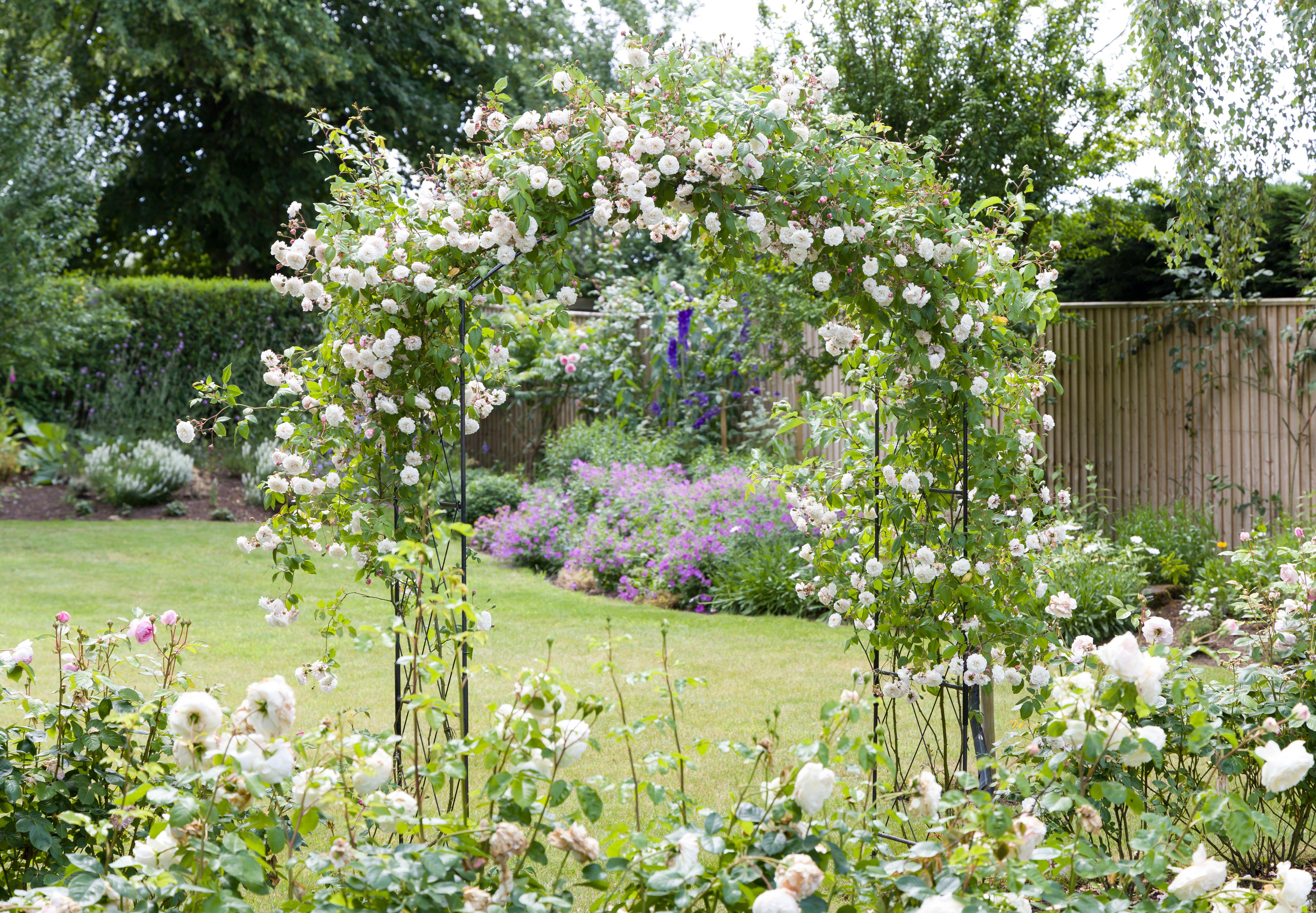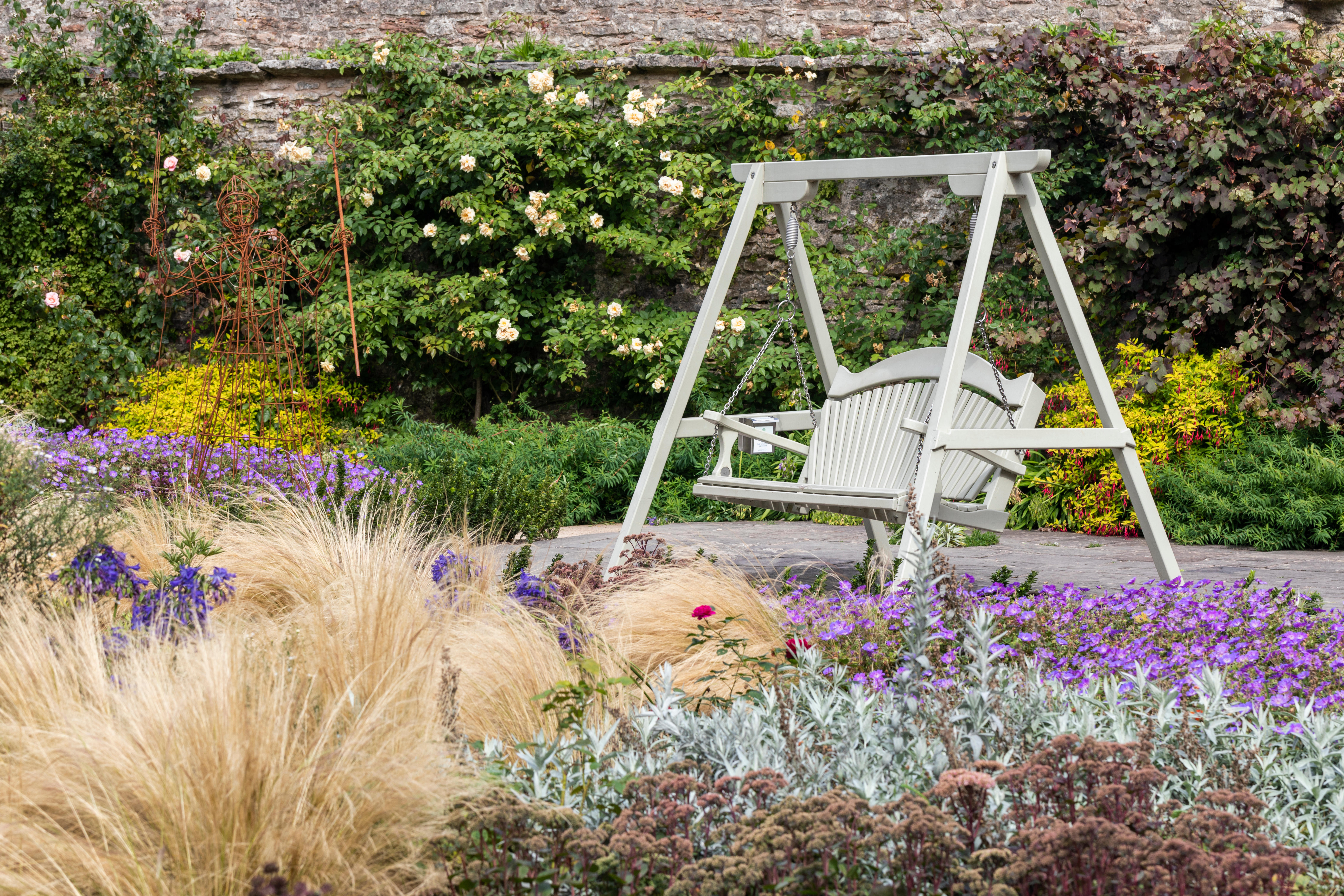Sensory gardens - what they are, how to make one, why you should
Sensory gardens are the latest trend, loved for their healing properties. Here's how to make one

The delicate scent of an old English rose, the downy caress of a lamb’s ear leaf, the gentle whisper of grasses in the wind... It could be argued that all gardens are sensory by default. After all, all modern garden ideas feature plants that just can’t help being seen, or smelled, or touched.
A true sensory garden, however, calls for a rather more considered approach if it’s going to stimulate all five senses in a positive way. The point is to offer a richer, more soothing, more therapeutic experience than your average garden can deliver - not for nothing are they often called healing gardens.
Pre-covid, sensory gardens were mostly to be found in hospitals, care homes and hospices, or anywhere where those with sensory sensitivities or a loss of certain senses might be able to benefit from the health-giving powers of nature. But with lockdown came a renewed interest in gardening, not to mention the need for healing en masse. And so, people started hankering after “more colour, scent and texture” in their gardens, reports Mark Lane, the renowned landscape gardener, author and Gardeners World presenter, who has overseen the design of numerous sensory spaces for charities, hospices and hospitals. “Humans are biophilic - we have an innate need to be surrounded by greenery - and the pandemic has put us all back in touch with that.”
Whereas before Covid, most people wanted their gardens to be attractive entertaining spaces, adds Chelsea gold medal-winning garden designer and author Ann-Marie Powell, “Now they’re considering how they want their gardens to smell, look and taste, too."
So how exactly do sensory gardens heal? That therapeutic moment is rooted in the power of plants to “anchor us in the here and now”, explains Olivia Kirk, another Chelsea gold-medallist who teaches healing garden design at the London College of Garden Design. “Slowing down and engaging all senses is very calming.” That might be prompted, for instance, by a “hellebore that nods down so you have to bend to pick up the head to see what’s inside”, says Kirk. “The garden has put you in the moment and helped you to switch off.”
While Britain’s most noted sensory gardens are for the private benefit of those who need them most (among them, Horatios’s Gardens, Pilgrims Hospices, and The Chestnut Tree House Hospice garden), there are plenty of public gardens with strong sensory elements. Lane recommends Great Dixter by the late Christopher Lloyd in East Sussex, which “will enliven your senses with colour, texture and movement”. The Newt in Somerset by Penelope Hobhouse "is the most amazing garden”, says Kirk, “with no expense spared, but without looking trashy”. She also recommends the “prairie-style” Piet Oudolf Field at the Hauser & Wirth gallery in Somerset. And look out for Powell’s World Food Garden at Wisley, Surrey, opening 24th June. “There’s water, light, shade, colour, wildlife, and it will appeal to all your senses,” she says. “There are lots of takeaways to use at home.” Indeed, it is the creation of your own sensory garden that will be the most therapeutic, claims Lane, because on top of all that sensory stimulation, “getting your hands muddy releases endorphins”. Dig in (or, not literally, if you're following the no dig gardening approach, of course).
HOW TO CREATE A SENSORY GARDEN

- Create a sensory garden by introducing plenty of pollinators and fruiting plants to encourage wildlife: as well as doing nature a service, you’re creating the opportunity to stop and watch.
- Put benches into the borders, Kirk suggests, “so that you become part of the garden, and the flowers are really available to you”.
- Make use of your garden table, says Powell: cluster together small pot plants with sensory elements: pelargoniums, basil, verbena - “and use the aromatic leaves in your cocktails”.
- Avoid sensory overload: “Aim for slow-release fireworks,” says Kirk, “where at any one point, something amazing is going on, but not all at once.”
- Check out the useful tips on creating a sensory garden at Thrive.org.uk and Sensorytrust.org.uk
The Livingetc newsletters are your inside source for what’s shaping interiors now - and what’s next. Discover trend forecasts, smart style ideas, and curated shopping inspiration that brings design to life. Subscribe today and stay ahead of the curve.
Fleur Britten is a well-respected journalist who for years was the Senior Features Editor at Sunday Times Style. She is known as one of the smartest lifestyle journalists around, revered for being able to decode trends and report on new zeitgeists as they happen. She now writes for the Telegraph, Livingetc, Vogue, The Times, Harper's Bazaar and the Guardian.